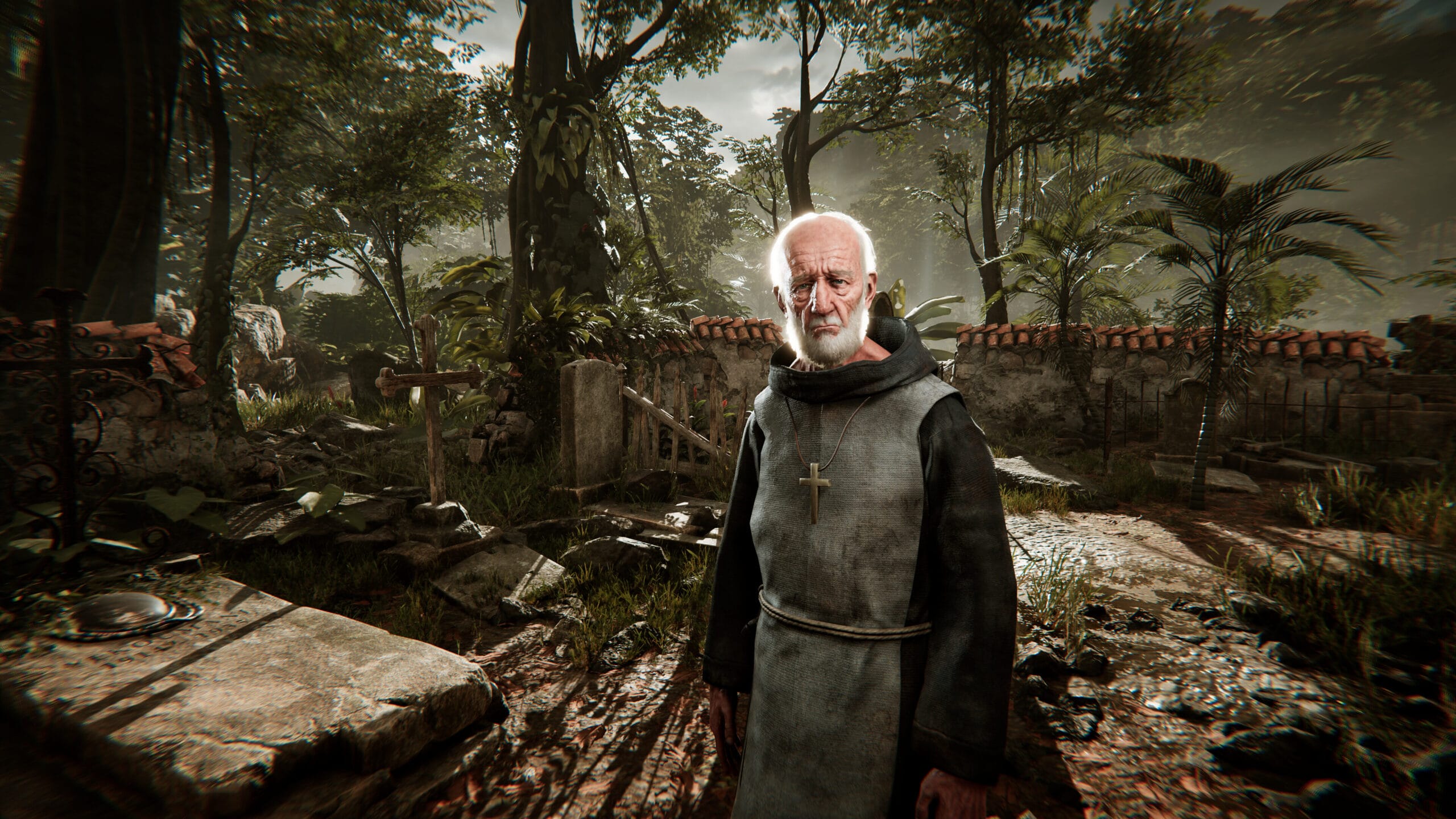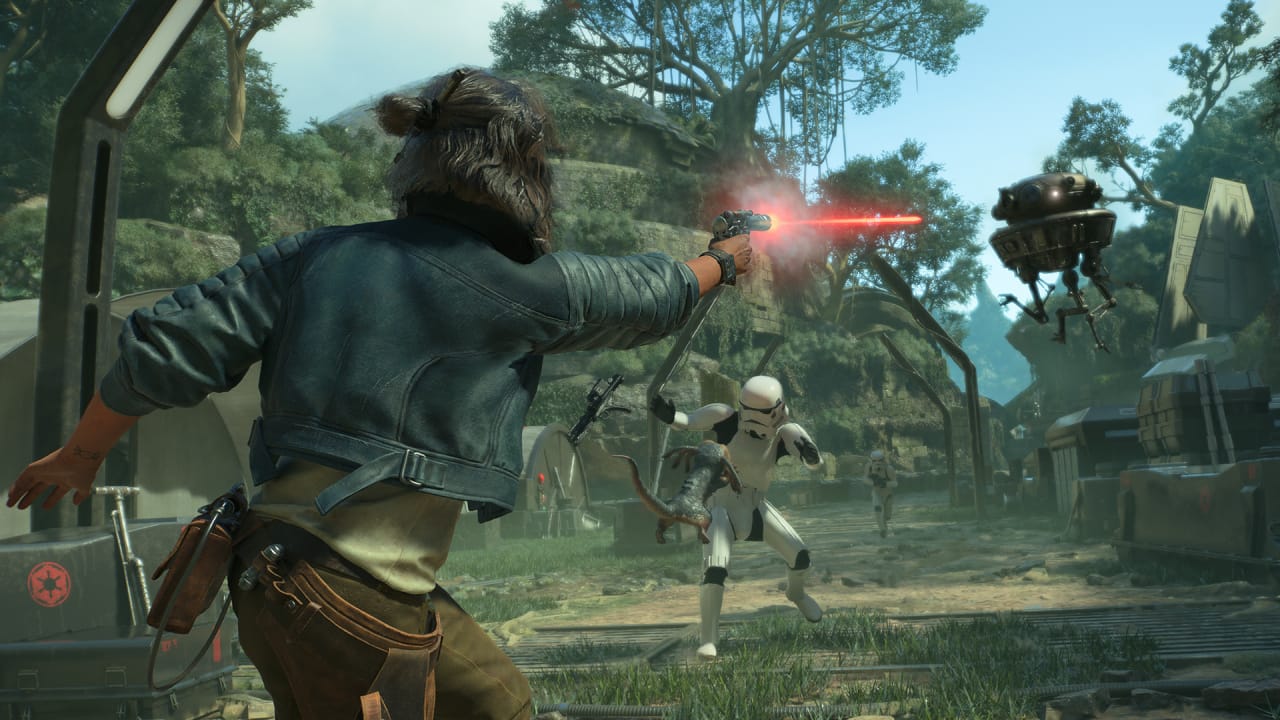The original Amerzone is somewhat of a forgotten gem these days, although back in 1999, there was a time when it made quite a splash, particularly in France where developer Microids is based. Microids is one of the oldest game studios still going, originally having been founded in 1985, and remaining independent to this day. Amerzone was the first game from developer Benoît Sokal, who based it on a graphic novel he wrote in 1986. Sokal would also go on to make the Syberia series of point-and-click adventures (which would take this game as a foundation), but he was also known for his comic book series Inspector Canardo, featuring a duck detective (from which the “L’Amerzone” graphic novel originally came). Very sadly, Sokal passed away in 2021 following a long illness, aged 66.
The 1999 version of Amerzone was an adventure game in very much the same wheelhouse as Myst, using pre-rendered scenes which the player could navigate around in a node-based format, while being able to spin the camera 360 degrees to examine each scene. The original Myst and Riven had used fixed camera perspectives for their exploration, it only changing to 360 degree, Google Streetview-esque movement for the marvellous Myst III: Exile in 2001. Amerzone pre-empted this movement style by two years, while still providing some incredibly graphically impressive environments for the era, alongside a thrilling adventure of exploring a semi-fantasy version of the Amazon rainforest, filled with mystery and intrigue.
This year, Microids have remade Amerzone – The Explorer’s Legacy from the ground up, recreating all environments as fully 3D in a modern engine, while also somewhat amending and tweaking the original story, with a fully new voice cast. One interesting decision is that the node-based movement has been retained; you cannot fully explore environments by moving your player character freely, but instead click to move between scenes. This is done more elegantly than in 1999, with many animations showing you climbing ladders, walking down paths and so on. It does somewhat hinder full immersion into the world however, as the detail in the environments often means you want to freely roam in order to take a closer look. Thankfully you also gain access to a fast travel, which makes moving around locations very speedy.
You play as an unnamed journalist, tasked by your publication Mondial Magazine in 1998 to interview Professor Valembois, an elderly former explorer about his adventures in Amerzone during the 1930s; a South American republic which later became a dictatorship under Antonio Alvarez, who was formerly a friend of Professor Valembois. The professor is in poor health and desperately wants you to travel to Amerzone and return the egg of one of the White Birds; the large, beautiful but legless birds who inhabit the skies surrounding the great volcano. The White Birds are supposed to provide good luck, and with the professor’s dying breath, he provides his old expedition journal and instructions on how to use his Hydraflot (a fantastical flying boat) to return to Amerzone.
The story has some twists and turns and a fair number of deviations from the original, not simply retelling the story exactly beat for beat, but adding in some new variety. I would describe this as more similar to how the remake of System Shock evolved itself compared to last year’s remake of Riven. While Riven did change things compared to its original, they were comparatively minor, while System Shock took a few more dalliances and experimentations. Amerzone splits the difference, remaining faithful at a macro-level, while changing smaller things. The game has two difficulty modes; the Traveller mode is the more story-focused, with puzzles more directly explained, while Adventurer mode is more faithful to the original game, being less likely to signpost what you should be doing next and leaving you to deduce things more often.
Voice acting is good throughout and the puzzles themselves are well done, particularly the investigation aspects which do feel a lot more like you’re a journalist compared to the 1999 game. The pause menu contains information on all the clues you’ve uncovered, your main objectives, but also any side objectives which might help to fill in the backstory of characters or locations. These are completely optional but reading particular notes or examining items can help to fill in many of the blanks, and provide more context to the world and the overarching story. None of the puzzles are too taxing though, and overall in structure you can’t influence the path of the narrative, just go with the flow.
The updated environments all look great and have a huge amount more detail than the blocky and quite empty original environments. The walk to Professor Valembois’ lighthouse at the beginning of the game for example took place on a windswept barren moorland in the original, whereas now its a leafy forest with the trees rustling in the wind. Characters look a bit over-exaggerated but for the style it works well enough. Unfortunately despite the node-based movement the game does suffer from some performance problems especially when transitioning between some scenes; hopefully this can be patched because there’s nothing here which should be technically demanding on even a moderately old system.
Amerzone – The Explorer’s Legacy is the kind of game that probably would never have gotten a remake if Microids wasn’t still around and had people on staff who worked with Benoît Sokal, and cared deeply about his legacy and of the imaginative and fantastical worlds he created in his games. While this remake is perhaps a bit too faithful to the 1999 original, it nonetheless shows considerable care and respect for its source material, and wants to create a remake worthy of that legacy. Indeed, the remake is dedicated to Sokal and his memory. On this objective, Amerzone is clearly a success.








